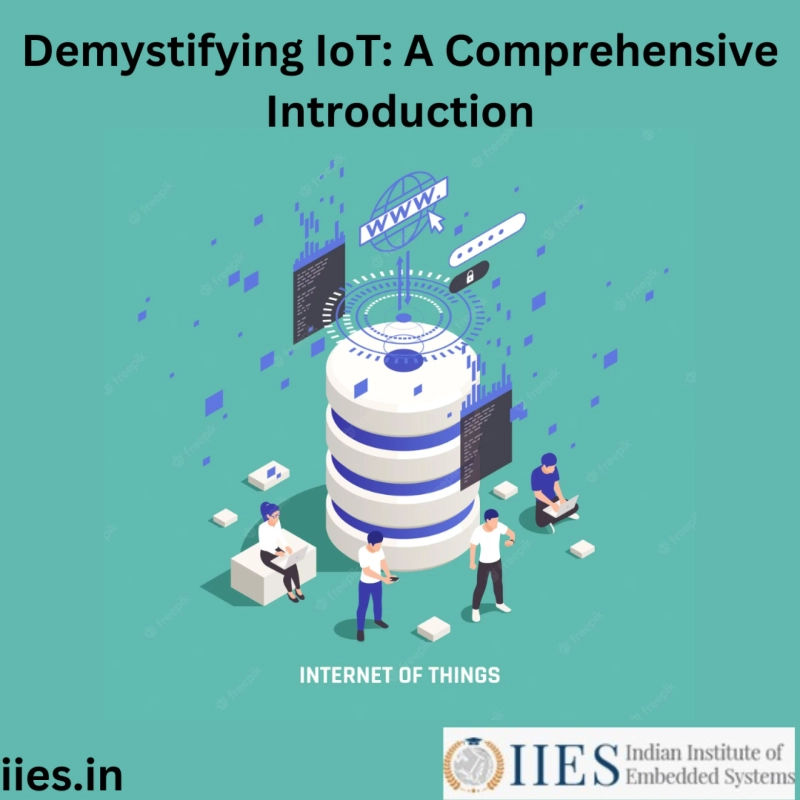Understanding IoT
The Internet of Things, often abbreviated as IoT, is a revolutionary concept that has been transforming various industries and aspects of our daily lives. At its core, IoT is all about connecting devices and objects to the internet, enabling them to communicate with each other and exchange data. This comprehensive introduction to IoT will demystify the concept and explore its significance in the world of technology and embedded systems.
The Building Blocks of IoT
Connected Devices
At the heart of IoT are the devices themselves. These can be anything from traditional electronic gadgets like smartphones and sensors to everyday objects like refrigerators, thermostats, and even streetlights. The key is that these devices are equipped with sensors, processors, and communication modules that allow them to collect and transmit data.
Data Connectivity
IoT wouldn't be possible without data connectivity. Devices need a way to communicate, and this is achieved through various means, including Wi-Fi, cellular networks, Bluetooth, and more. The choice of connectivity depends on the specific requirements of the IoT application.
Cloud Computing
All the data collected by IoT devices needs to be processed, stored, and analyzed somewhere. This is where cloud computing comes in. Cloud platforms provide the infrastructure and tools to manage the massive amount of data generated by IoT devices efficiently.
Data Analytics
Once the data is in the cloud, it can be analyzed to extract valuable insights. Data analytics plays a crucial role in IoT by helping organizations make informed decisions, optimize processes, and predict future trends.
IoT in Action
Smart Homes
One of the most common applications of IoT is in smart homes. Smart thermostats, lights, and security systems are all connected to the internet and can be controlled remotely via a smartphone app. For example, you can adjust your home's temperature or check your security cameras from anywhere in the world.
Healthcare
IoT has transformed the healthcare industry. Wearable devices, like fitness trackers and smartwatches, can monitor your heart rate, sleep patterns, and activity levels. Doctors can use this data to track patient health more effectively.
Industrial IoT (IIoT)
In manufacturing and industry, IoT is known as Industrial IoT or IIoT. It involves using sensors and data analysis to optimize processes, reduce downtime, and improve overall efficiency. For instance, sensors can monitor the condition of machinery and predict when maintenance is needed, preventing costly breakdowns.
Challenges and Considerations
Security
As more devices connect to the internet, security becomes a significant concern. IoT devices can be vulnerable to cyberattacks if not properly protected. Ensuring the security of data and devices is a top priority in IoT implementation.
Privacy
IoT devices collect a vast amount of data, and there are concerns about how this data is used and who has access to it. Privacy regulations and policies are continuously evolving to address these issues.
Interoperability
With various devices and communication protocols in the IoT landscape, ensuring interoperability can be a challenge. Standards like MQTT and CoAP are used to facilitate communication between different devices and platforms.
Exploring the Future of IoT
IoT is a rapidly evolving field with immense potential. As technology continues to advance, we can expect to see even more innovative applications of IoT across various industries. Whether it's in agriculture, transportation, energy management, or smart cities, IoT is set to play a pivotal role in shaping the future.
The Role of Embedded Systems in IoT
Embedded Systems Defined
Embedded systems are at the heart of IoT devices. These are specialized computing systems designed to perform specific tasks or functions. They typically consist of a microcontroller or microprocessor, memory, input/output interfaces, and software that runs on the hardware.
Real-Time Operation
One critical aspect of embedded systems is their ability to operate in real-time. This means they can respond to inputs or events with minimal delay, making them ideal for applications where timing is crucial, such as controlling a robotic arm or monitoring vital signs in healthcare devices.
Low Power Consumption
Many IoT devices are battery-powered or need to operate efficiently to conserve energy. Embedded systems are designed with low power consumption in mind, ensuring that devices can run for extended periods without frequent battery changes.
Learning Opportunities with IIES
The Indian Institute of Embedded Systems (IIES) offers a range of courses and training programs tailored to individuals looking to enhance their skills in programming, embedded systems, and IoT. Whether you are a beginner looking for IoT crash courses or an experienced professional seeking IoT certification courses, IIES provides valuable learning opportunities.
Conclusion
IoT is not just a buzzword; it's a transformative technology that is reshaping industries and our daily lives. With the right understanding of its building blocks, applications, challenges, and the pivotal role of embedded systems, you can navigate the IoT landscape more confidently. Embracing IoT and gaining expertise in embedded systems can open up exciting career opportunities and help you contribute to the ongoing IoT revolution.
Explore the Indian Institute of Embedded Systems (IIES) today to advance your skills in programming, embedded systems, and IoT. Be part of the future of technology.


